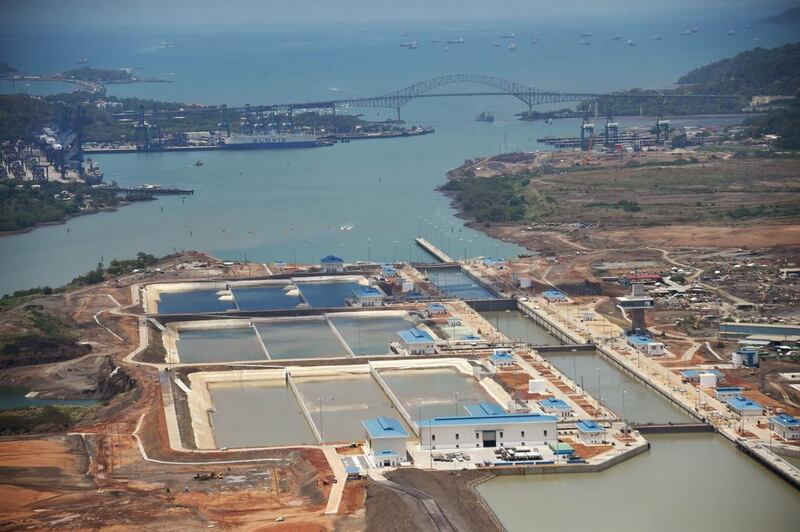The opening of an expanded Panama Canal in coming days is expected to have a limited impact on most petroleum flows, and products will still dominate transit through it rather than crude, the US Energy Information Administration (EIA) said.
The Panama canal Authority on Sunday will inaugurate a third set of locks after a US$5.2 billion expansion project that will accelerate transit while allowing larger vessels to pass through.
As crude is typically transported in tankers larger than allowed by the new capacity of the canal, only the traffic of smaller vessels carrying refined products is expected to increase, the EIA said.
Refined products transported from North to South America are typically carried in Panamax tankers, which fit in the canal before the expansion, the first in more than a century.
“In 2015, most of the petroleum-related traffic on the canal moved southbound, from the Atlantic to the Pacific, with diesel fuel and petrol accounting for the largest share of traffic,” the EIA said in its weekly report.
Increasing US exports of refined products from the Gulf of Mexico coast to the west coast of South America, with destinations of Chile, Ecuador and Peru, use the canal as a transit hub.
The US Gulf Coast in 2015 exported 159,000 barrels per day (bpd) of distillates to these countries, a 25 per cent increase versus 2014. Some 63,000bpd of motor petrol were also sent in the same direction last year, compared with 42,000bpd in 2014, the EIA said.
Panama’s third set of locks will allow four transits per day, accommodating vessels with estimated capacity of 400,000 barrels to 600,000 barrels.
“The latest canal expansion comes at a time when petroleum product [clean] tanker rates are at their lowest levels since 2009, in part because of elevated global product inventories”, the EIA said.
Lower prices for bunker fuel as a result of lower oil prices is expected to result in lower freight rates paid by the shipper as well. The logistics of US propane exports to Asia would also improve as ship-to-ship transfers will no longer be needed in most cases, the EIA added.
The Panama Canal Authority said that the tanker Lycaste Peaxe carrying liquefied petroleum gas will be the first oil vessel passing through after the expansion.
Vessels transporting liquefied natural gas will start passing through in August, the Authority added. LNG facilities are expected to be built as a second phase of the canal expansion.
business@thenational.ae
Follow The National's Business section on Twitter





